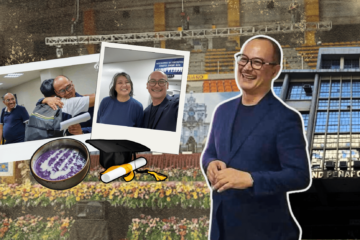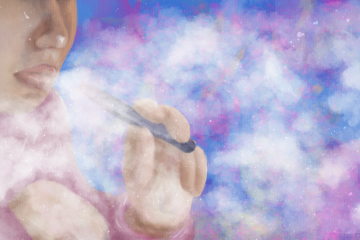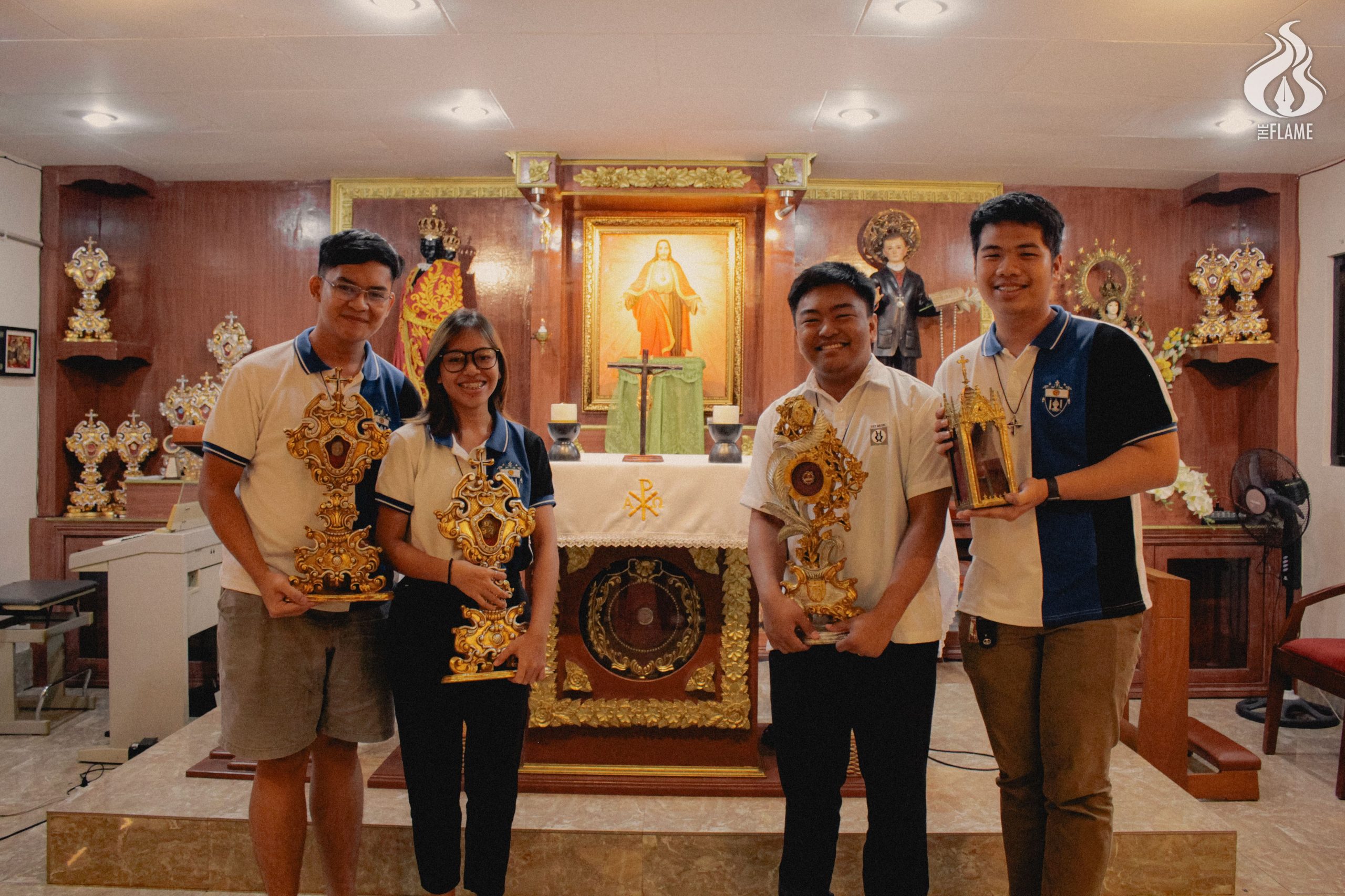
GRACIANA CALIMBO, a quiet and soft-spoken 19-year-old student, has been serving the Catholic Church since she was six and takes a particular interest in all things religious.
So, when she exhibited strange and disturbing behavior, it was an emergency to her peers.
In August this year, her boyfriend, Luke Traballo, started to notice unusual behavior from Graciana: she spoke rudely to him and had trouble recollecting what was happening after having a fit. She also wanted to kill herself.
After a few days, Luke called a Church minister to request an assessment. He suspected that Graciana was suffering from demonic infestation. Dave dela Cruz, the minister, asked if she had been feeling anything odd. Graciana said her right shoulder and arm felt heavy, as though they were drooping.
“She needs deliverance,” the minister said.
As he started to pray, he held on to a stone relic from Mount Gargano in Italy, where Saint Michael the Archangel is believed to have appeared. Graciana said that she started to have some scratches on her right shoulder.
Two hours of continuous praying passed, and finally, Graciana felt easier. They all believed that it was through prayer and the relic that she was freed from the infestation.
The stone from Italy is one of the thousands of holy relics Graciana, Luke, Dave and two of their friends are guarding, a task that they hope will help bring the faithful closer to the saints.
Sacred sanctuary
The deliverance session that freed Graciana from demonic harassment took place in what seemed like a two-story residential building in Marikina Heights.
Once you enter the building, you will likely be greeted by young Thomasians wearing their uniforms and Dominican crosses around their necks.
A small door will lead you to a narrow hallway lined with statues of saints and, finally, a room with a marble altar. The room has wooden cabinets that ran from ceiling to floor. They displayed, at first glance, an abundant collection of framed photographs of saints.
Yet, a closer look would reveal that they are more than just images of the men and women who are venerated for their virtues. Below the saints’ faces were small round frames made with gold and silver and glass, and they held bloodied cloth, strands of hair and pieces of bone, most of them no larger than a gravel stone.
These fragments are relics, or objects that are taken from or associated with a holy figure. The chapel, the Blessed Ivan Merz Reliquarium, houses about 5,000 relics, more than a thousand of them on display.

Established in 2018, the chapel was named in honor of Blessed Ivan Merz, an educator who taught the youth the Catholic faith in Croatia during the early 20th century. Blessed Ivan was beatified in 2003 and is now in the process of canonization, which will grant him the title of saint.
The caretakers of the chapel are Artlets students Graciana, Luke and Nicholas Singzon and Conservatory of Music student Mathew Garol. They are all freshmen: Nicholas and Luke are from Philosophy, Graciana is from History and Mathew is from the Performance program, majoring in Choral Conducting. They all reside a couple of hours away from the Reliquarium, but they meet in the chapel three to four times a week.
A few years ago, when they first stepped into the Reliquarium, not all of them had an interest in relics. Mathew only liked dressing and owning religious images, while Luke was a young camarero, or caretaker of larger statues.
In 2019, Mathew learned about the Reliquarium when he saw the chapel’s online post about the procession of sacred relics, a few days before the Feast of the Holy Relics, which is celebrated on the fifth of November. Eventually, he began as a volunteer there, later inviting Luke and Graciana to attend a regular mass.
Luke said he felt something different in the chapel when he attended a mass that day, describing it as a lingering feeling he could not understand.
“Even if it’s just a small chapel, I learned that the environment is different because they’re all here,” Luke told The Flame, his opened palm pointing to the relics.
“That’s when I learned that the environment is really different. Because, here, if these bones could talk, they would tell a story that spans 2,000 years of the Church’s history.”
This prompted him to eventually leave the bigger parish he and Graciana had been serving to dedicate their service to the Blessed Ivan Merz chapel.
Meanwhile, Nicholas, who first came to the chapel solely as part of his formation as a lay Dominican, still serves in various communities. Although he lived in Fairview, Quezon City — the farthest among the four — he became part of the Reliquarium’s community due to his personal inclination to relics.
Even before serving in the Reliquarium, a piece of St. Rita of Cascia’s bone already sat on his desk since the pandemic, which he personally requested from Italy through e-mail. St. Rita, an Italian widow and Augustinian nun who lived in the 14th century, is one of the patron saints of impossible cases.
Not for sale
There are three types of relics. First-class relics are parts of a saint’s body, while second-class relics are objects that he or she used. Third-class relics are things touched to a first-class relic.
According to the Canon Law of the Catholic Church, relics cannot be bought or sold. In fact, selling them is considered an excommunicable offense. Rather, to acquire relics, an endorsement letter from the local bishop and a formal request to the saint’s country of origin must be sent. Only then can a relic be bequeathed upon an institution or individual.
In the case of the Reliquarium, only 10 percent of the thousands are requested. The rest are given to the chapel, mostly by monasteries in Europe and the United States that are closing permanently.
“They cannot abandon the relics. So, monasteries send them to places where they can be cared for, particularly here,” Luke said as he motioned to some small plastic boxes on the side of the chapel.
“If you see here, those are new arrivals from Europe,” he added.
In 2003, the first relic was bequeathed to the Reliquarium: it was a piece of St. Mother Teresa of Calcutta’s habit, given by nuns to the parents of Dave, the minister who performed deliverance on Graciana. It was the nuns’ way of giving thanks to dela Cruz’s parents for helping in Mother Teresa’s orphanage.
In the same year, Dave, along with fellow church ministers, started a group of young people who focused on caring for relics. The number of relics under their care grew, and they toured the relics in malls for the public to venerate. Eventually, land was donated to them in Marikina, and so the Blessed Ivan Merz Chapel was built to permanently house the relics.
Among the thousand relics displayed, the fragment of the nail that pierced Jesus Christ and the Virgin Mary’s hair were the four Thomasians’ favorites. Luke particularly likes to show off the nail to visitors.
“There was one time when pilgrims were in the chapel, and I showed them the nail. Diyos ko! They suddenly cried!” he said, carefully holding the nail’s ornate reliquary wrapped in a black cloth.
The relic was said to be made from one of the four nails that pierced Jesus Christ.
“That’s why, most of the time, pilgrims cry because they feel some kind of spiritual presence,” he said.
Placing the nail back, Luke then took out a big monstrance from behind the altar. At its center is a minute locket called “theca,” where a relic is encased.
“This is the relic of Mama Mary’s hair,” he said, kissing the reliquary’s glass.
“It all comes back to presence,” Luke explained. “The person you’re devoting to, your idol, the one you’re imitating in life, it’s a part of them.”
While other relics dating back to ancient times lack written documentation for authentication, the volunteers explained that the Virgin Mary’s relic, like most relics in their care, underwent an authentication process to obtain a certificate of authenticity.
A relic’s authenticity is also indicated through the red string and wax seal that hold it, as well as through recorded miracles associated with it.

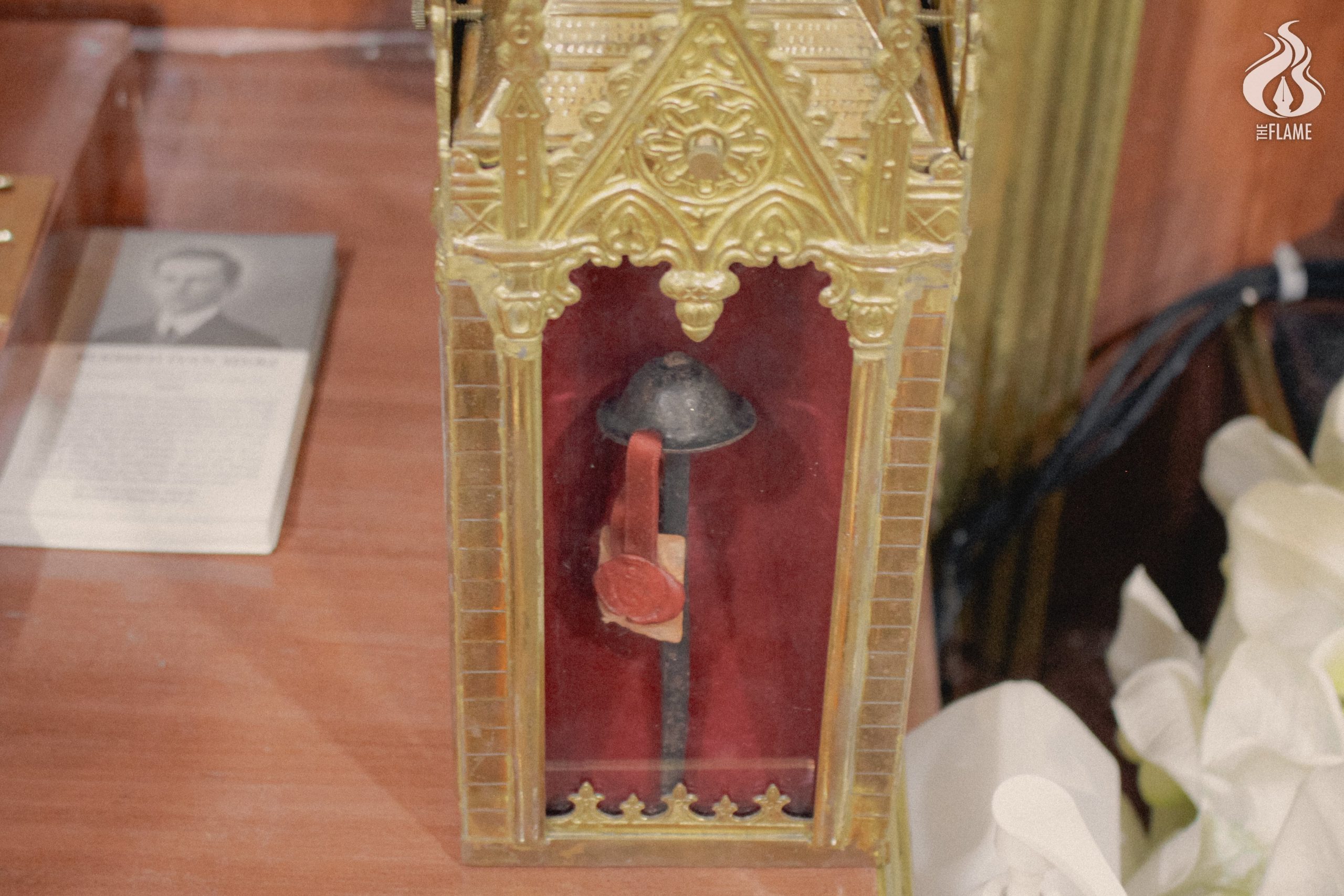
Tormentors of demons
Many believe such objects can ward off evil spirits due to their spiritual presence. Yet, Dave said priests only use relics to guide exorcism or deliverance, which is believed to free a person from spiritual troubles.
According to “Of Exorcisms and Catholic Supplications,” a Catholic Church document that details the guidelines for performing an exorcism, authorized priests conducting an exorcism should always be armed with a relic of the saints, along with holy water and a crucifix.
The first reference to its use dates back to the Acts of the Apostles, when the handkerchiefs that touched St. Paul while preaching in Corinth were able to heal the sick and cast out demons.
Graciana’s bout with the devil further strengthened her faith as well as her resolve to be of service to God.
“It was not only Jana, actually,” Mathew said, referring to Graciana’s experience last August.
“The three of us have also been delivered from demons,” Luke said.
But what they went through was only a minor circumstance in Dave’s role as a deliverance minister.
Even as he assists priests during exorcism, he said he remains amazed at what the relic can do to a possessed person.
“As soon as the priest holds the relic closer, the possessed starts acting violently. That’s when I believe in the power of relics,” Dave said.
“The possessed even screams ‘Ayan na sila, pababa na sila (They’re here, they’re coming down)’ when we call for saints,” he said.
“We do not really use the relics in deliverance or exorcism, but they aid us in our prayers.”
Deliverance, Luke explained, could also be used to combat practices associated with folk healers, or albularyo, which are considered a form of witchcraft.
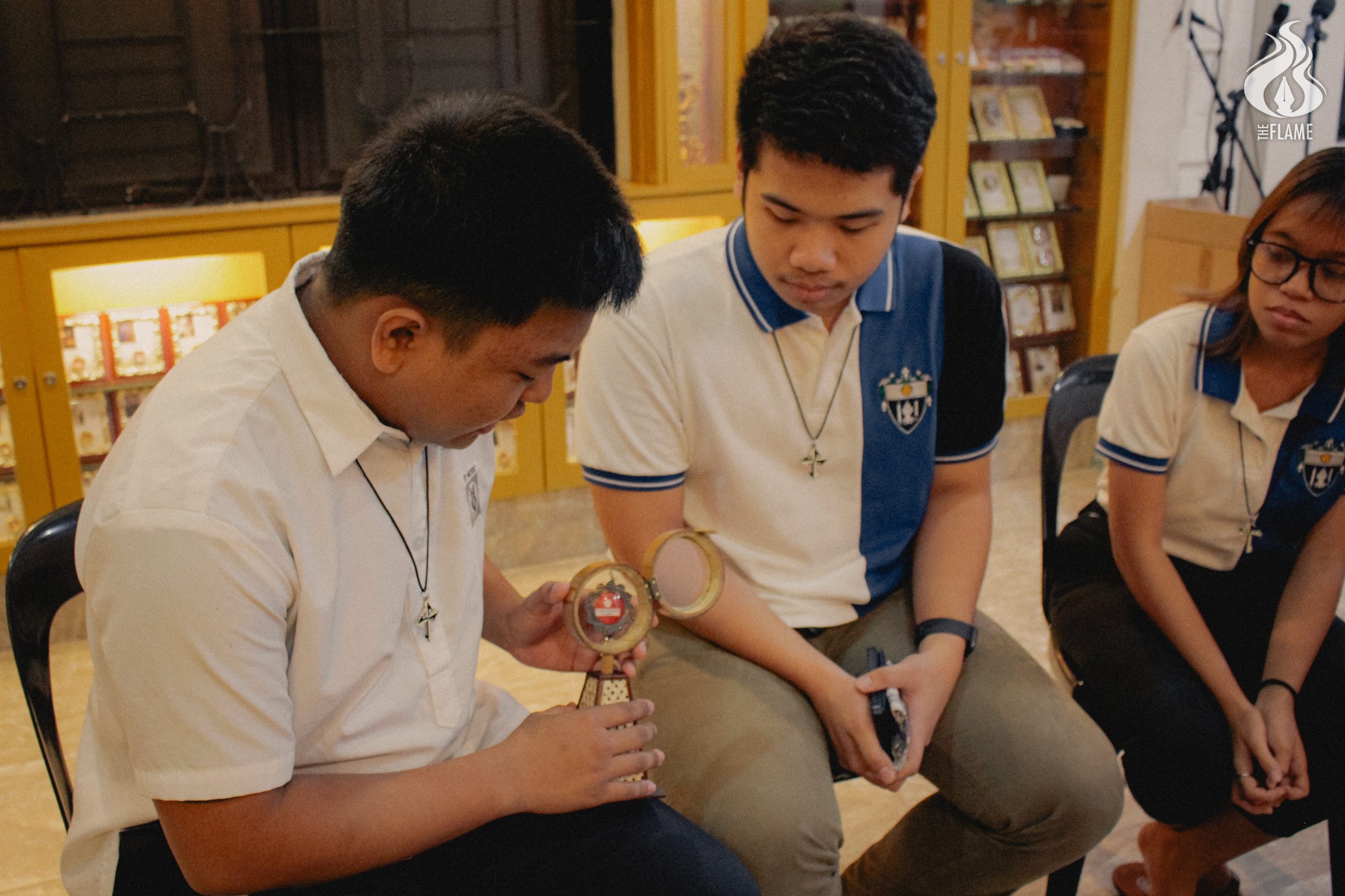
Help from heaven
Custodians of relics believe that asking for intercession from saints using authentic relics would help them achieve the things they are praying for.
Mathew, who only had faith and a third-class relic to hold on to during the UST entrance test, sought the help of Blessed Ivan and St. Thomas Aquinas during the exam day.
“I said, ‘Kuya Ivan, Kuya Thomas, please help me. I know I didn’t review, but I hope I can answer,’ ” he said, making his friends burst into laughter, as they found humor in his plea to the saints despite his lack of preparation.
The moment he touched Blessed Ivan and St. Thomas’ card that he always kept in his wallet, he said he felt a surge of inspiration and heard an inner voice, saying, “You can do it, you can pass it.”
Because of their practice of venerating the saints and using religious images, Catholics have been accused by other Christian sects of idolatry, a violation of the first of the ten commandments of God.
But Dave clarified that they do not worship the saints. Rather, they only honor them by respecting their name and venerating their relics, as “they are saints in heaven who are closer to God.”
“Like how you need your mom to ask your dad to buy shoes for you, you also need someone near the heavens to help you pray,” Nicholas said.
The saints, they said, are only mere intercessors for people to reach God. Mathew believes that it was through this and his stocked knowledge that he also passed the UST entrance test.
The Catechism for Filipino Catholics states that God “reserves for Himself alone the right to express and produce images of Himself.” The first commandment, which bars idolatry or the worship of false gods, is a forceful reminder that God is “infinitely beyond any of His creatures” and “no image or mental concept can ever capture Him,” it added.
According to the catechism, people, as “embodied spirits,” experience and express the spiritual realities touching their lives in a physical, material way, through signs and symbols.
“Thus did Christ act and teach throughout his public ministry, using physical touch, bread and fish, wine and water, to bring God’s grace palpably present among the people. Therefore the Gospel itself grounds the use of images in the service and worship of God,” the document, produced by the Catholic Bishops Conference of the Philippines, read.
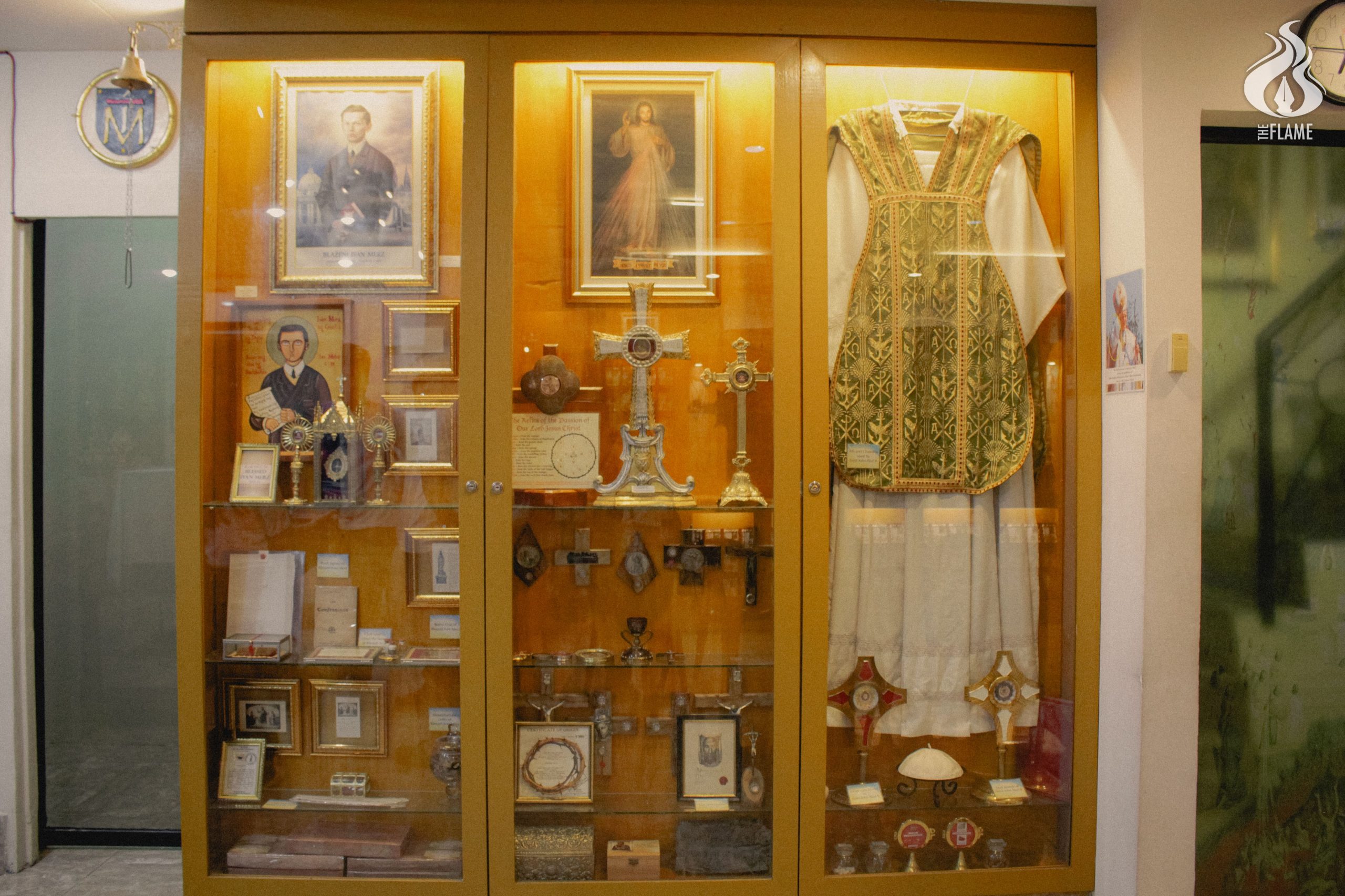
Struggles
While the chapel serves as a home to the relics of saints, it is not exempted from trials, just like the holy men and women who experienced struggles because of their faith.
Volunteers of the Reliquarium said the establishment faces financial struggles as it only relies on the community’s generosity. Unlike larger parishes and well-known cathedrals, it lacks sufficient and stable funding for renovations and expansions and only depends on the earnings of the tour of sacred relics and the religious store. The inconsistent number of visitors always worries volunteers.
“We’ll have an entire weekend without anyone visiting,” Luke said.
This year, the flood brought by Typhoon Carina posed yet another challenge to the chapel, leaving the relics in a precarious and vulnerable state.
When the chapel first acquired the donated land in Marikina, Dave felt reassured by Marikina Heights’ elevation; he knew the relics would be safe from floods. But during the onslaught of the storm, the town of Marikina was inundated, and the water in the chapel’s area rose waste-deep.
Dave, alone in the Reliquarium, had to lift the relics beyond the reach of the floodwaters. But after securing the relics by himself, he slipped on the stairs and was left unconscious for two hours. Despite surviving a near-death experience, Dave and the relics continue to face persistent threats posed by flooding and a leaking chapel ceiling.
Although he is planning and praying for a relocation, he said it would only be possible through a helping hand.
“If someone donates land, then that would be great. If not, we’ll just make do here for now,” he said.
Grim?
“Frankly speaking, this is really odd,” Luke said, looking around the room.
“If the ‘Reliquarium’ were not a religious term, it [would] be called an ossuary — a repository designed to store human skeletal remains,” Nicholas said.
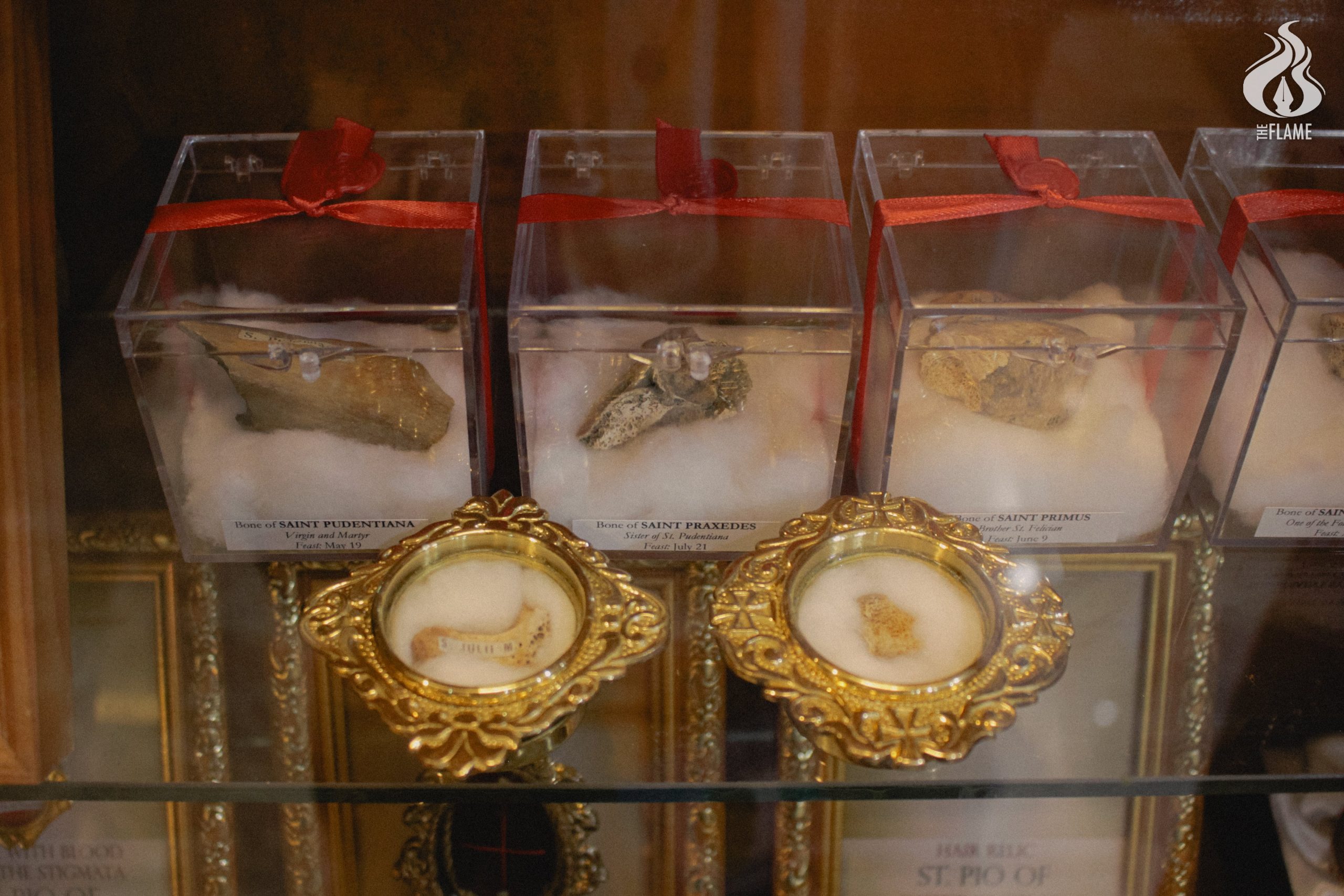
The volunteers were well aware that some may find their interest grim and macabre. Yet, for the Thomasians who have been servers in Catholic churches since they were children, the sacred fragments are their connection to the saints they honor.
“Why would you be scared if you get to know the lives of these people? Rather than be scared or feel odd about it, you would rather feel inspired,” Nicholas said.
“We feel at home,” Luke added.
It is their devotion that makes the remains of saints more than just a collection of items from the past. Without devotion, they said, one would not own a relic but only a piece of bone.
For them, the essence of venerating the relics is to be inspired by the lives that the saints led. This links the four Thomasians with the young educator after whom the Reliquarium is named, a dedicated servant of God they strive to emulate.
“We do not feel scared of all these bones because we have a deeper understanding of whose bones these are,” Luke said.
“And their lives are, you know — they’re touching,” Nicholas said.
More than friendship
When asked if they struggle with balancing their responsibilities between academics and the Reliquarium, the four Thomasians said they do not.
“It’s not really a matter of balance,” Luke said. “Because serving here in the Reliquarium is also a help to the academics.”
“Unlike when you’re serving in other churches, you’re just serving — it’s just work,” Luke added.
“Here, you’re enveloped in one system. You have support in your studies, personal life and spiritual life.”
It has been their habit to help each other in academics. They usually film their exercise videos for their physical fitness course in the small space of the chapel and spend time in the Reliquarium’s library to write paper requirements.
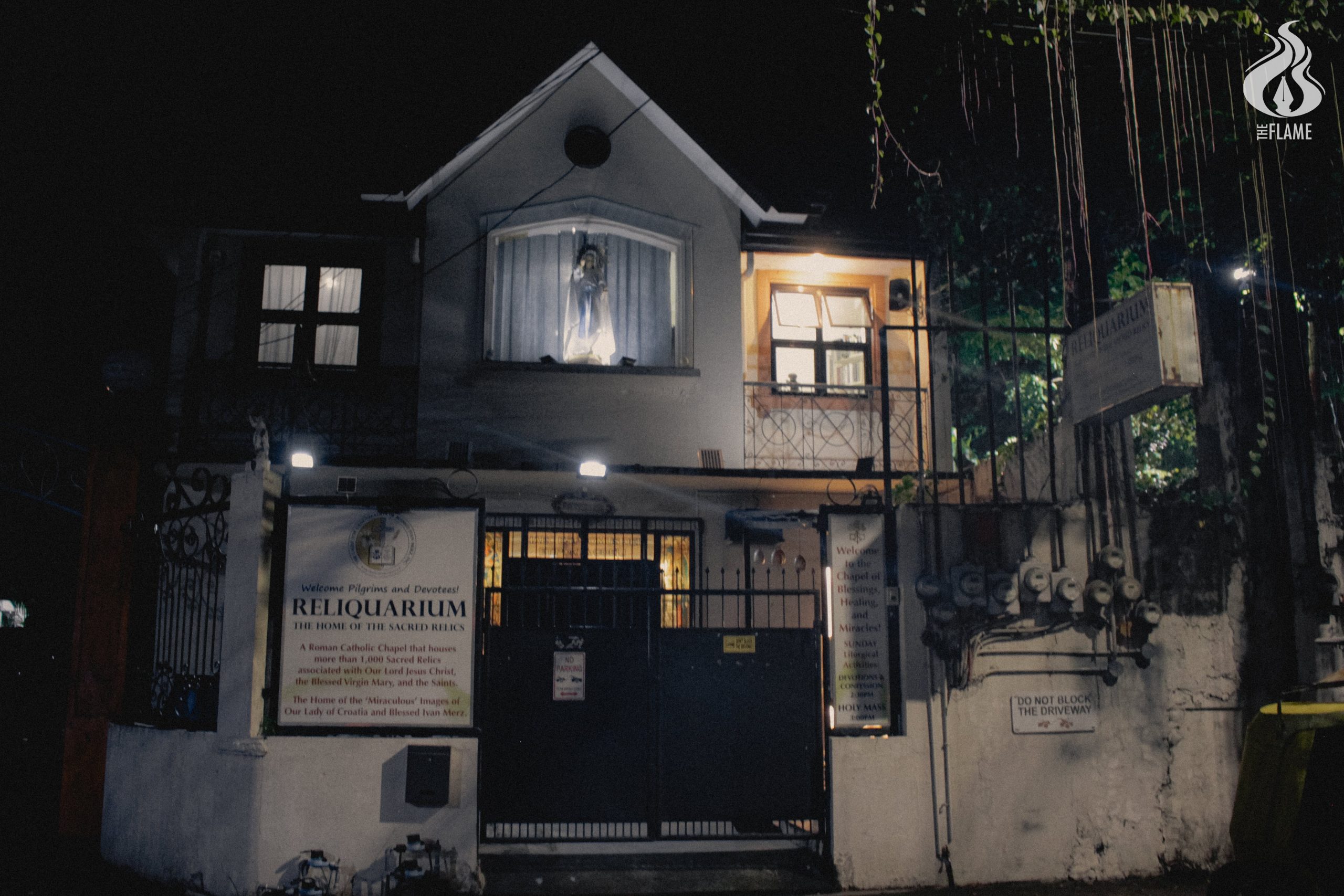
For them, what they value the most is the kind of space and bond that the Reliquarium has given them.
“You see us willingly going here to the Reliquarium on a Friday evening just to be with these people in the center. This is one of my places where I can feel at peace,” Nico said.
“No matter what our problem is, no matter how much we cry, how much we scream, there’s always the way to the house — to the Reliquarium,” Luke added.
“It’s literally a family.” F — with reports from Eugene Paul Lorenzo

